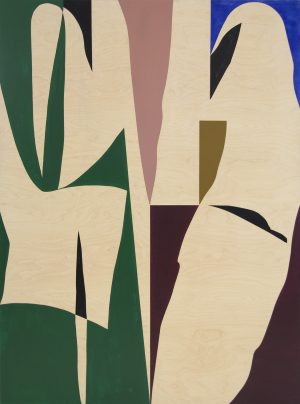
Dániel BERNÁTH
Mirror Lake Swan
- Year(s)
- 2021
- Technique
- acrylic on plywood
- Size
- 166x125,2 cm
Artist's introduction
What is the minimum requirement to create a good painting in the 21st century? Dániel Bernáth's artistic program seems to be built around this question, and he keeps the guiding thread of this simplicity, when he does not burden the picture with narrative, but stops at the tools of minimalism and abstraction, choosing an unusual painting basis with a highly reduced visual language. The artist clearly opted for painting and its issues after graduating from the University of Fine Arts in 2014 with a degree in painting. This is when he won the Gruber Béla Prize and in 2015 the prestigious Essl Art Prize too. In 2020, he was awarded the Gyula Derkovits Fine Arts Scholarship, and in 2022 as winner of the Strabag Prize he had a solo exhibition at the Strabag Kunstforum (Austria). Although he spends most of his creative time in retreat in a studio house in the Mátra, he has participated in several international residencies in Spain, Germany and Krems, Austria. He was also participant of several solo and group exhibitions. Dániel Bernáth brings the power of nature's simplicity into the studio, and sees change and development in terms of the functioning of Hegelian dialectics. It also poses the second question: how can all this power and order be represented in an object we call a painting? The question is as simple and complex as – using a biblical parable – seeing the possibility of the universe in a mustard seed. The artist's "response" is to choose an unconventional form for the basis of the painting. Either the picture frames are curved and organic, giving a semi-natural experience to the minimalist composition structured with neon colors; or the panel itself becomes natural based, and the wood material that he makes visible allows this minimal symbolism to manifest itself. On the other hand, by transforming it into an object, the painting loses the quality in a modernist l'art pour l'art sense that minimalism and abstraction would indicate, namely that it does not refer to anything apart from itself. Perhaps it is the tension and dialectic of this contradiction that makes these object-paintings true icons, contemporary icons, and, like true icons, they do not represent but embody, and actually become what they are. The opposites offset each other and the possibility of the universe appears in the mustard seed. Délia Vékony
More artworks in the artist's collection »






